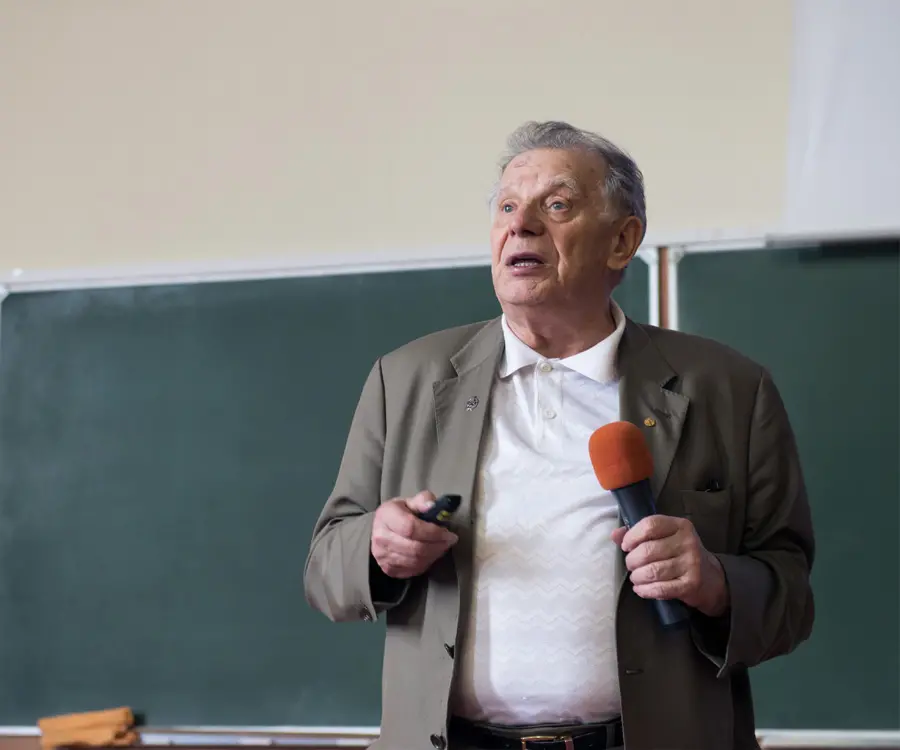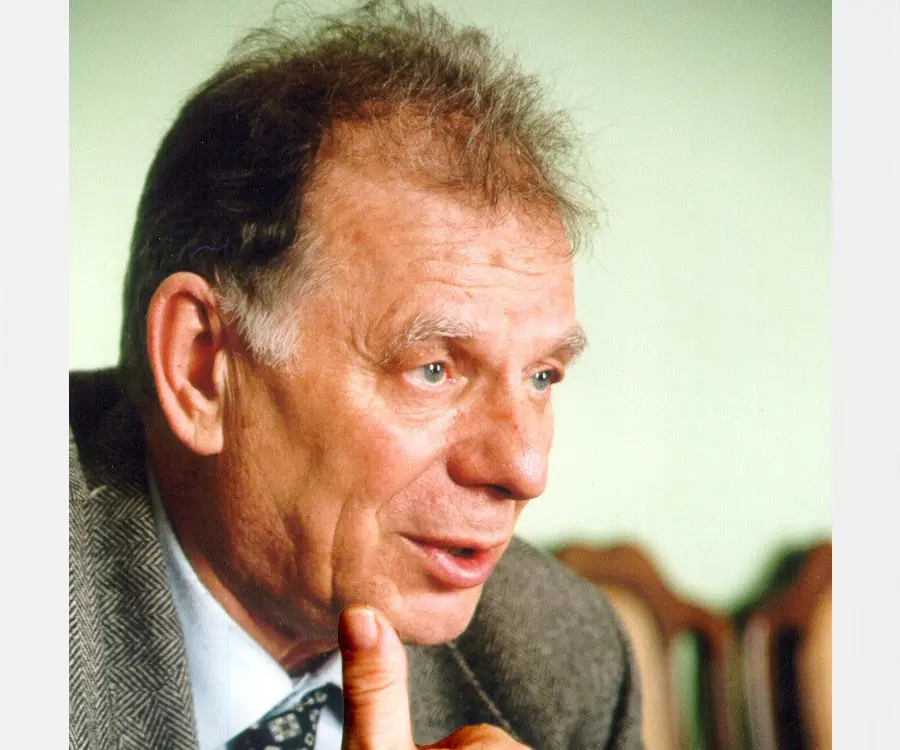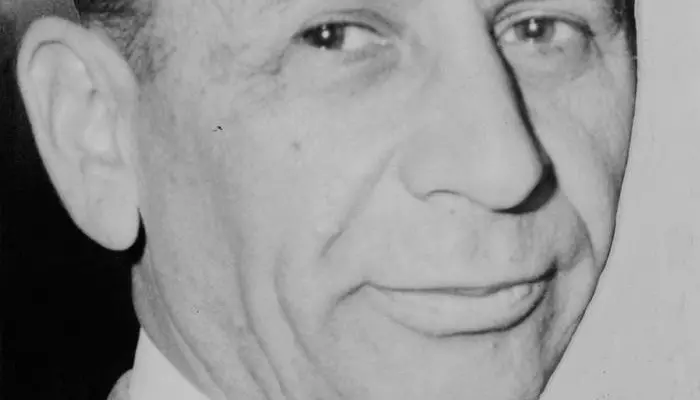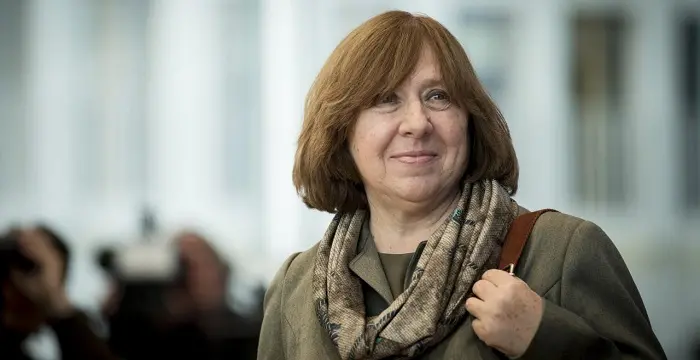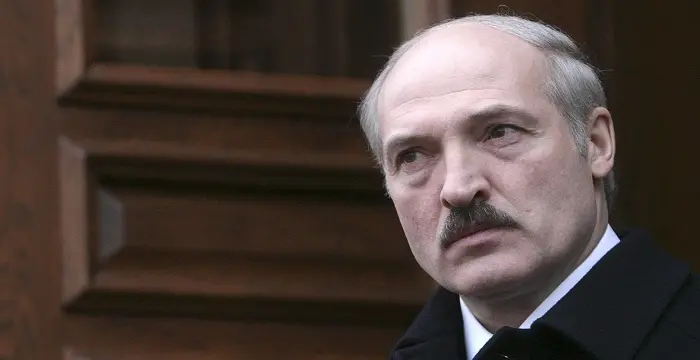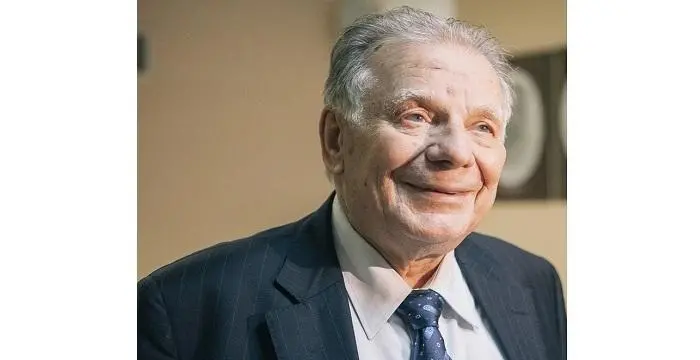
Zhores Ivanovich Alferov - Physicists, Career and Personal Life
Zhores Ivanovich Alferov's Personal Details
Zhores Ivanovich Alferov is a Nobel Prize winning Russian physicist
| Information | Detail |
|---|---|
| Birthday | March 15, 1930 |
| Nationality | Belarusian, Russian |
| Famous | Scientists, Physicists |
| Spouses | Tamara Darskaya (m. 1967) |
| Known as | Zhores Alferov |
| Universities |
|
| Birth Place | Vitebsk, Byelorussian SSR, Soviet Union |
| Born Country | Belarus |
| Gender | Male |
| Father | Ivan Karpovich Alferov |
| Mother | Anna Vladimirovna |
| Sun Sign | Pisces |
| Born in | Vitebsk, Byelorussian SSR, Soviet Union |
| Famous as | Physicist |
// Famous Scientists
Juliane Koepcke
Juliane Koepcke is a German-Peruvian biologist, who was the lone survivor among the 92 passengers and crew of the ill-fated LANSA Flight 508 that crashed in the Peruvian rainforest on 24 December 1971. Know more about her life in this biography.
Henry Cavendish
Henry Cavendish was a theoretical chemist and physicist, renowned for discovery of hydrogen and calculation of the mass of earth. To know more about his childhood, profile, timeline and career read on
Konstantin Tsiolkovsky
Konstantin Tsiolkovsky was a Russian rocket scientist and a pioneer of astronautics. This biography provides detailed information about his childhood, family, personal life, career, achievements, etc.
Zhores Ivanovich Alferov's photo
Who is Zhores Ivanovich Alferov?
Zhores Ivanovich Alferov is a Nobel Prize winning Russian physicist, renowned for his contribution to the creation of modern heterostructure physics. Born in the second quarter of the twentieth century to Byelorussian parents, he developed interest in semiconductors while he was a third year student at Ul'yanov Electro technical Institute in Leningrad. On receiving his BS degree from there, he directly joined Ioffe Physical-Technical Institute as junior researcher. There he was included in a team of young scientists and began working on germanium photodiodes and silicon. Soon they were asked to build a special semiconductor device for the first Soviet atomic submarine. Working as a team, they not only completed the project in record time, but Alferov was especially identified for his contribution and was honored with the first of many state honors that he would later receive. Interestingly, he earned his candidate degree three years after this work and his PhD almost after twelve years. Meanwhile he had made quite a number of inventions and became first a senior researcher and then the head of the laboratory and finally the director of the institute. Until now, he has authored 4 books, 400 articles, and had made 50 inventions.
// Famous Physicists
Henry Cavendish
Henry Cavendish was a theoretical chemist and physicist, renowned for discovery of hydrogen and calculation of the mass of earth. To know more about his childhood, profile, timeline and career read on
Walter Kohn
Nobel Laureate Walter Kohn was an Austrian-born American theoretical chemist and physicist. Check out this biography to know about his childhood, life, achievements, works & timeline.
Nikola Tesla
Nikola Tesla was a Serbian-American inventor, best known for his development of alternating current electrical systems. This biography of Nikola Tesla provides detailed information about his childhood, life, achievements, works & timeline.
Childhood & Early Life
Zhores Ivanovich Alferov was born on March 15, 1930, Vitebsk in Byelorussia, which was at that time a part of the U.S.S.R, but now a part of Republic of Belarus. Both his parents, Ivan Karpovich Alferov and Anna Vladimirovna, were of Byelorussian ancestry.
His father, Ivan Karpovich Alferov, was a member of the Bolshevik party. He retained his adherence to the communist principles all his life and imbibed them into his children. For his living, he worked as a factory manager and was posted in various cities. Later he became a director in the same farm.
Zhores’ mother Anna was a librarian and also headed a public organization for housewives. He also had an elder brother named Marx, who died in 1944, fighting in the Second World War. Young Zhores adored him very much and was much affected by his death.
After the war, Zhores entered the only boy's school in the destroyed city of Minsk and graduated from there in 1947. During this period, he was much influenced by his physics teacher, Yakov Borisovich Meltserson and developed interest in the subject under his influence.
On Meltserson’s advice, he next entered the Department of Electronics, Ul'yanov Electrotechnical Institute in Leningrad. Here he developed interest in research work and when he was in the third year, started working on semiconductors and vacuum processes; finally graduating from there with a BS degree in Electronics in December, 1952.
Career
On January 30, 1953, Zhores Ivanovich Alferov joined Physico-Technical Institute, now known as Ioffe Physical-Technical Institute, as junior researcher. Working with a team of young researchers they created the first soviet p-n junction transistor on the 5th of March of the same year.
Slowly, their team began to expand. In a very short span, they created the first Soviet germanium power rectifiers. Concurrently, they continued to work with germanium photodiodes and silicon.
In May 1958, the team was asked to work out a special semiconductor device for the first Soviet atomic submarine. It meant that they would not only have to build another germanium power rectifier, but also have to develop new technology. By the month of October, they succeeded in their mission.
In 1959, the work earned him Order of the Badge of Honour. This was the first of many Sate Honours that he would later get.
In 1961, he earned his candidate degree of sciences in technology (equivalent to MS) from the same institute. His thesis involved working out the power germanium and partially silicon rectifiers. The work contributed to the development of Soviet power semiconductor electronics.
From 1962, Alferov started working on III-V semiconductor heterostructures and by the following year, proposed the first heterostructure laser. Next in 1964, he was promoted to the post of Senior Researcher and continued his work on it.
In 1966, Alferov and his research team developed the first practical heterostructure electronic device. They then went on to create the first electronic components made from heterostructures, including the first heterostructure laser, a device he had proposed in 1963.
In 1967, he was promoted to the post of Senior Research Associate and was made the head of the laboratory at Physico-Technical Institute. Sometime in the same year, he visited STL laboratories in Harlow. He found them to be well equipped, but the scholars there were more interested in the theoretical aspect of heterostructures.
On returning to Leningrad, he continued working in the same direction and in 1968-1969, was able to control the electron and light fluxes in classical heterostructures, based on the arsenid gallium-arsenid aluminum system. Also in 1969, he made his first trip to the United States of America.
However, Alferov had not earned his PhD as yet and so in 1970, he submitted the gist of his experiments as his doctoral thesis, earning his PhD in the same year. Also in 1970, they created heterostructures based solar cells, which were later mounted on Sputnick.
Work went on at a steady space at the Ioffe Physical-Technical Institute under his guidance. In 1987, he was made the Director of the institute and since 1989 he has been working as the Vice-President of the USSR Academy of Sciences and President of its Saint Petersburg Scientific Center.
Subsequently, Alferov entered politics and in 1995 became a member of the State Duma representing ‘Our Home –Russia’. Later he joined the Communist Party of the Russian Federation and was re-elected to Duma in 1999, 2003 and 2007 as its representative.
Major Work
Zhores Ivanovich Alferov is best known for his advanced research into III-V semiconductor heterostructures. The work included detailed studies of epitaxy processes, injection properties, lasers, LED’s, and solar cells etc.
Alfred’s work in this respect provided the foundation for optical semiconductors and solar cells. It not only made the Soviet Union's Sputnik program possible, but also laid the foundation for the development of bar-code readers, cellular telephone communications etc.
Awards & Achievements
In 2000, Alferov jointly received the Nobel Prize in Physics "for developing semiconductor heterostructures used in high-speed- and opto-electronics". He shared the prize with Herbert Kroemer, who worked independently on the same topic and Jack Kilby, who invented the integrated circuit.
Other than that, he has received numerous other prizes including Global Energy Prize (2005), Kyoto Prize in Advanced Technology (2001), Demidov Prize (1999), Ioffe Prize (Russian Academy of Sciences, 1996), USSR State Prize (1984), Lenin Prize (1972), Stuart Ballantine Medal (1971) and Franklin's Institute Gold Medal (1971).
Personal Life & Legacy
In 1967, Alferov married Tamara Darskaya, who was working at a big Space Enterprise under the guidance of Academician V.P. Glushko in Moscow. Therefore, for around six months, Alferov had to make weekly trip from Leningrad to Moscow. Later she moved to Leningrad.
Professor Alferov is now the Editor-in-Chief of a Russian journal, Pis'ma v Zhurnal Tekhnicheskoi Fiziki and a member of the Editorial Board of a Russian journal Nauka i Zhizn'.
Trivia
When in 2007, the Russian Orthodox Church tried to introduce the basics of religious education into the public education system, Alferov was among the ten eminent academicians, who wrote an open letter to the President, expressing their concern about clericalization of the society.
// Famous Pisces Celebrities peoples
Christine Baumgartner
Christine Baumgartner is an American model and the wife of famous American actor Kevin Costner. Check out this biography to know about her birthday, childhood, family life, achievements and fun facts about her.
Galina Becker
Galina Becker is a former athlete and fitness model from America. Check out this biography to know about her birthday, childhood, family life, achievements and fun facts about her.
Nikkie De Jager
Check out all that you wanted to know about Nikkie De Jager, the famous Dutch Makeup artist; her birthday, her family and personal life, her boyfriends, fun trivia facts and more.
Zhores Ivanovich Alferov's awards
| Year | Name | Award |
|---|---|---|
Other | ||
| 0 | Demidov Prize (1999) | |
| 0 | Ioffe Prize (Russian Academy of Sciences | |
| 0 | 1996) | |
| 0 | USSR State Prize (1984) | |
| 0 | Lenin Prize (1972) | |
| 0 | Stuart Ballantine Medal (1971) | |
| 0 | Global Energy Prize (2005) | |
| 0 | Kyoto Prize in Advanced Technology (2001) | |
| 0 | Nobel Prize in Physics (2000) | |
Zhores Ivanovich Alferov biography timelines
- // 15th Mar 1930Zhores Ivanovich Alferov was born on March 15, 1930, Vitebsk in Byelorussia, which was at that time a part of the U.S.S.R, but now a part of Republic of Belarus. Both his parents, Ivan Karpovich Alferov and Anna Vladimirovna, were of Byelorussian ancestry.
- // 1944Zhores’ mother Anna was a librarian and also headed a public organization for housewives. He also had an elder brother named Marx, who died in 1944, fighting in the Second World War. Young Zhores adored him very much and was much affected by his death.
- // 1947After the war, Zhores entered the only boy's school in the destroyed city of Minsk and graduated from there in 1947. During this period, he was much influenced by his physics teacher, Yakov Borisovich Meltserson and developed interest in the subject under his influence.
- // 1952On Meltserson’s advice, he next entered the Department of Electronics, Ul'yanov Electrotechnical Institute in Leningrad. Here he developed interest in research work and when he was in the third year, started working on semiconductors and vacuum processes; finally graduating from there with a BS degree in Electronics in December, 1952.
- // 30th Jan 1953On January 30, 1953, Zhores Ivanovich Alferov joined Physico-Technical Institute, now known as Ioffe Physical-Technical Institute, as junior researcher. Working with a team of young researchers they created the first soviet p-n junction transistor on the 5th of March of the same year.
- // May 1958In May 1958, the team was asked to work out a special semiconductor device for the first Soviet atomic submarine. It meant that they would not only have to build another germanium power rectifier, but also have to develop new technology. By the month of October, they succeeded in their mission.
- // 1959In 1959, the work earned him Order of the Badge of Honour. This was the first of many Sate Honours that he would later get.
- // 1961In 1961, he earned his candidate degree of sciences in technology (equivalent to MS) from the same institute. His thesis involved working out the power germanium and partially silicon rectifiers. The work contributed to the development of Soviet power semiconductor electronics.
- // 1962 To 1964From 1962, Alferov started working on III-V semiconductor heterostructures and by the following year, proposed the first heterostructure laser. Next in 1964, he was promoted to the post of Senior Researcher and continued his work on it.
- // 1963 To 1966In 1966, Alferov and his research team developed the first practical heterostructure electronic device. They then went on to create the first electronic components made from heterostructures, including the first heterostructure laser, a device he had proposed in 1963.
- // 1967In 1967, he was promoted to the post of Senior Research Associate and was made the head of the laboratory at Physico-Technical Institute. Sometime in the same year, he visited STL laboratories in Harlow. He found them to be well equipped, but the scholars there were more interested in the theoretical aspect of heterostructures.
- // 1967In 1967, Alferov married Tamara Darskaya, who was working at a big Space Enterprise under the guidance of Academician V.P. Glushko in Moscow. Therefore, for around six months, Alferov had to make weekly trip from Leningrad to Moscow. Later she moved to Leningrad.
- // 1970However, Alferov had not earned his PhD as yet and so in 1970, he submitted the gist of his experiments as his doctoral thesis, earning his PhD in the same year. Also in 1970, they created heterostructures based solar cells, which were later mounted on Sputnick.
- // 1987 To 1989Work went on at a steady space at the Ioffe Physical-Technical Institute under his guidance. In 1987, he was made the Director of the institute and since 1989 he has been working as the Vice-President of the USSR Academy of Sciences and President of its Saint Petersburg Scientific Center.
- // 2000In 2000, Alferov jointly received the Nobel Prize in Physics "for developing semiconductor heterostructures used in high-speed- and opto-electronics". He shared the prize with Herbert Kroemer, who worked independently on the same topic and Jack Kilby, who invented the integrated circuit.
- // 2007When in 2007, the Russian Orthodox Church tried to introduce the basics of religious education into the public education system, Alferov was among the ten eminent academicians, who wrote an open letter to the President, expressing their concern about clericalization of the society.
// Famous Belarusian peoples
Svetlana Boginskaya
Svetlana Boginskaya is a former Soviet/Unified Team/Belarusian gymnast who was famously known as the ‘Goddess of Gymnastics’. This biography provides detailed information about her childhood, life, achievements, works & timeline
Andrei Arlovski
Andrei Arlovski is a Belarusian mixed martial artist and actor. Check out this biography to know about his childhood, family life, achievements and fun facts about him.
Meyer Lansky
Meyer Lansky was one of America’s most powerful gangsters of the 19th century. This biography provides detailed information about his childhood, family, personal life, criminal activities, etc.
Olga Korbut
Olga Korbut is a former Soviet gymnast who won six Olympic medals for her country and earned the title of ‘The Sparrow from Minsk’. This biography provides detailed information about her childhood, life, achievements, works & timeline.
Svetlana Alexievich
Svetlana Alexievich is an eminent Belarusian journalist and writer who won the 2015 Nobel Prize in Literature. Check out this biography to know about her childhood, life, achievements, works & timeline.
Alexander Lukashenko
Alexander Lukashenko is the current President of Belarus. This biography gives detailed information about his childhood, life, works, and timeline.
Zhores Ivanovich Alferov's FAQ
What is Zhores Ivanovich Alferov birthday?
Zhores Ivanovich Alferov was born at 1930-03-15
Where is Zhores Ivanovich Alferov's birth place?
Zhores Ivanovich Alferov was born in Vitebsk, Byelorussian SSR, Soviet Union
What is Zhores Ivanovich Alferov nationalities?
Zhores Ivanovich Alferov's nationalities is Belarusian, Russian
Who is Zhores Ivanovich Alferov spouses?
Zhores Ivanovich Alferov's spouses is Tamara Darskaya (m. 1967)
What was Zhores Ivanovich Alferov universities?
Zhores Ivanovich Alferov studied at Saint Petersburg State Electrotechnical University
Who is Zhores Ivanovich Alferov's father?
Zhores Ivanovich Alferov's father is Ivan Karpovich Alferov
Who is Zhores Ivanovich Alferov's mother?
Zhores Ivanovich Alferov's mother is Anna Vladimirovna
What is Zhores Ivanovich Alferov's sun sign?
Zhores Ivanovich Alferov is Pisces
How famous is Zhores Ivanovich Alferov?
Zhores Ivanovich Alferov is famouse as Physicist



